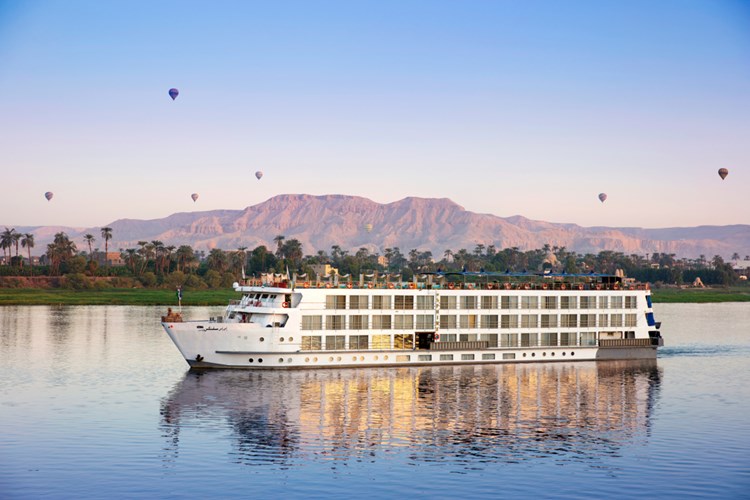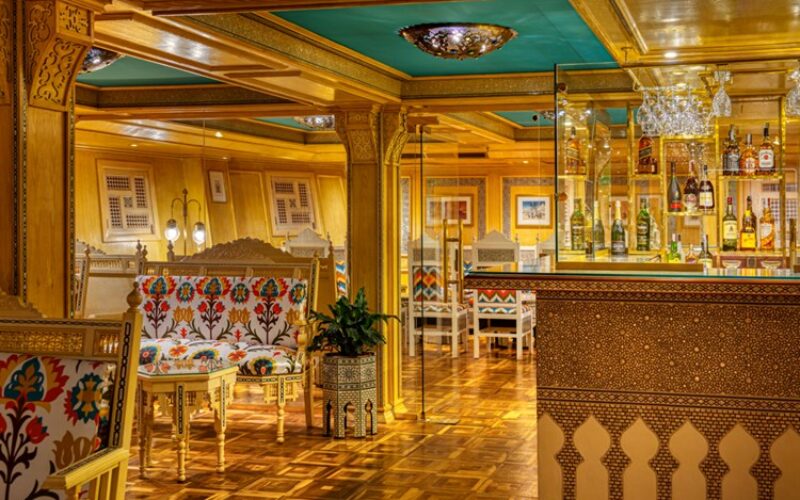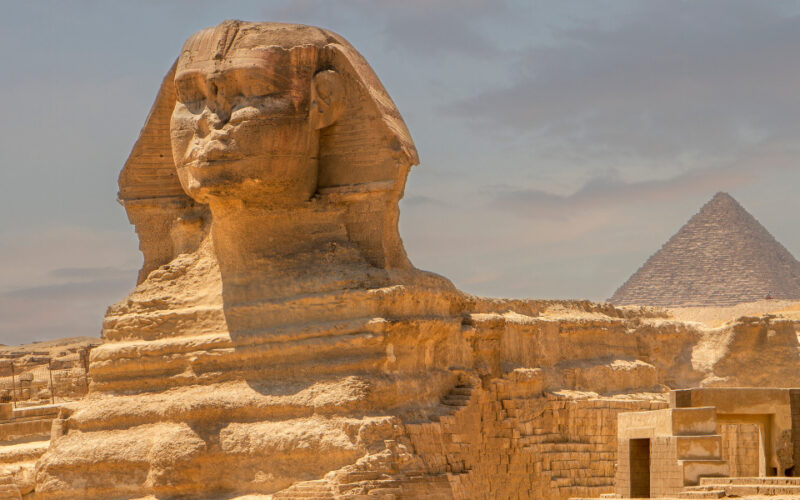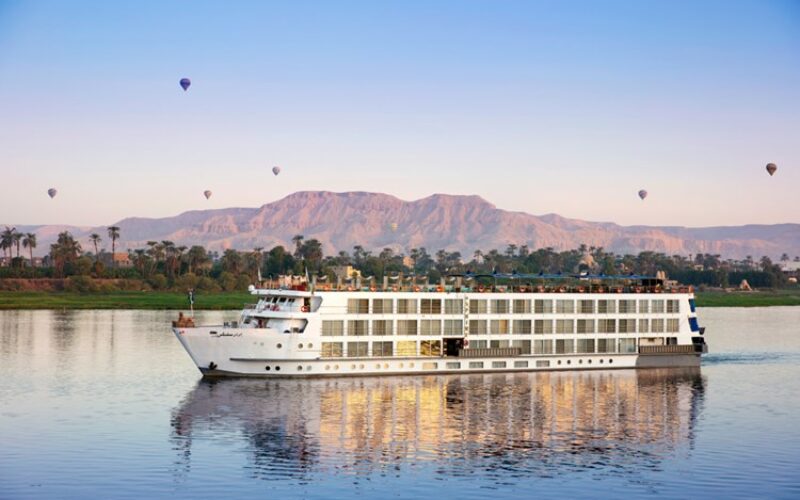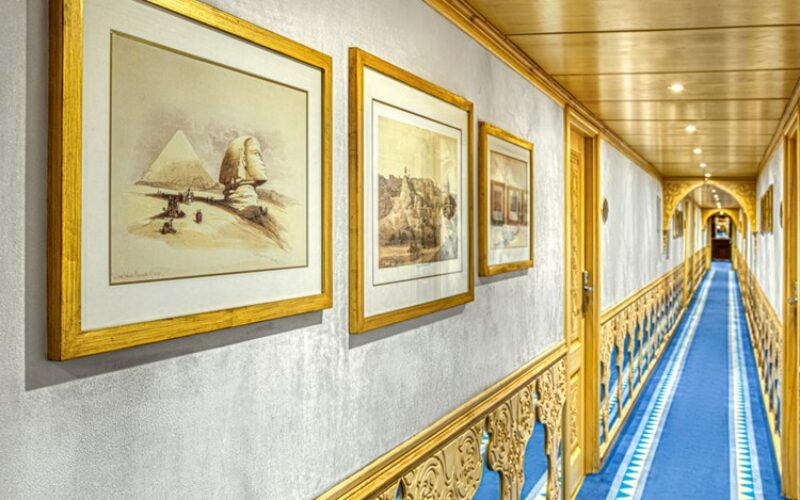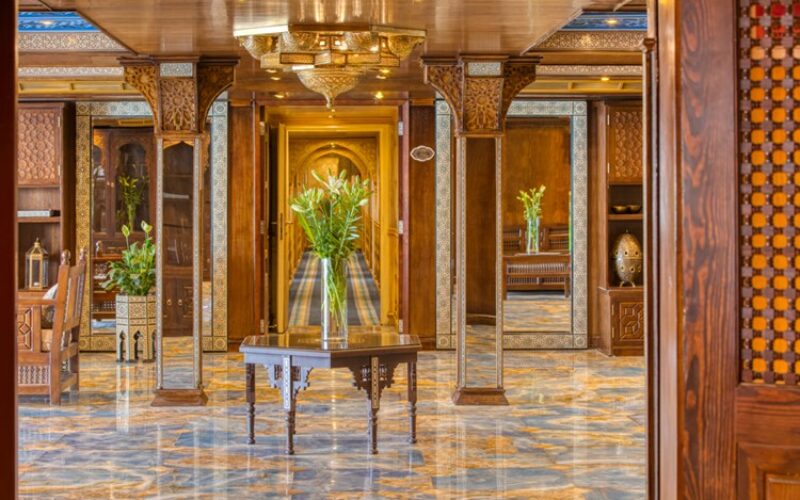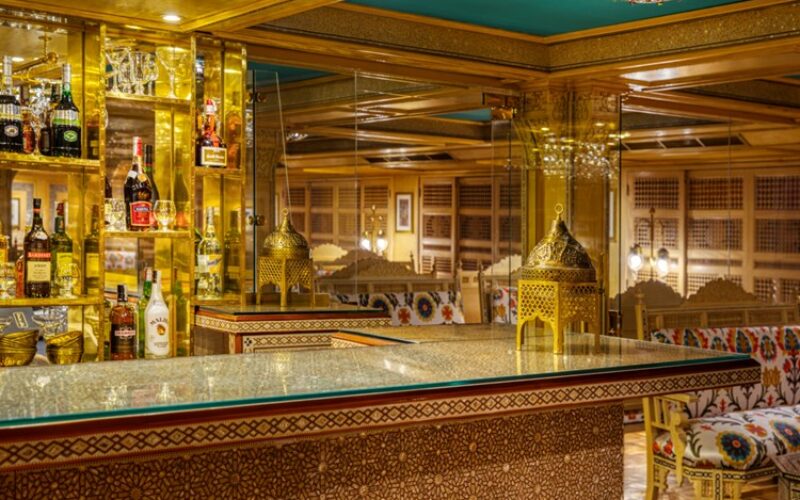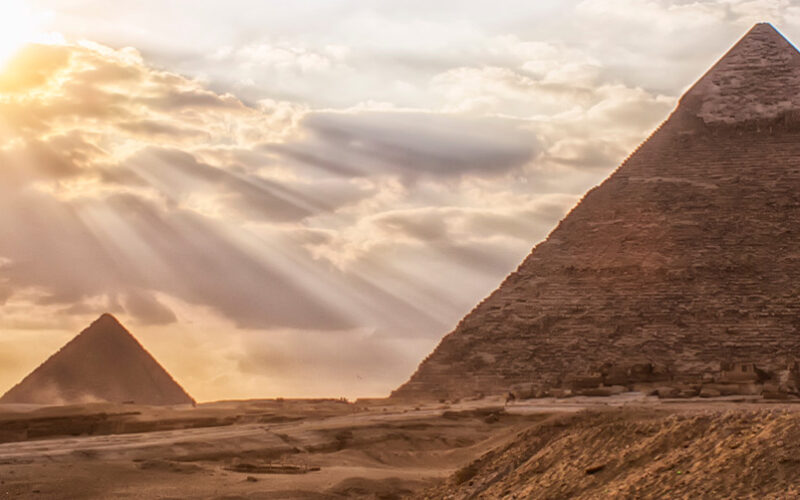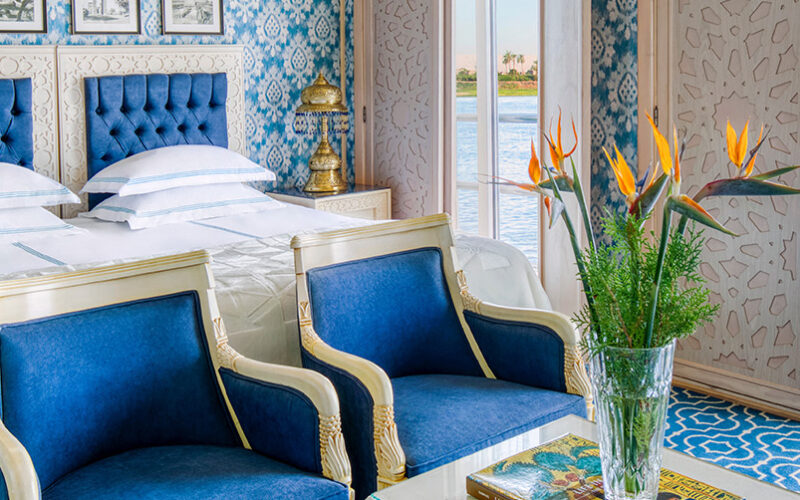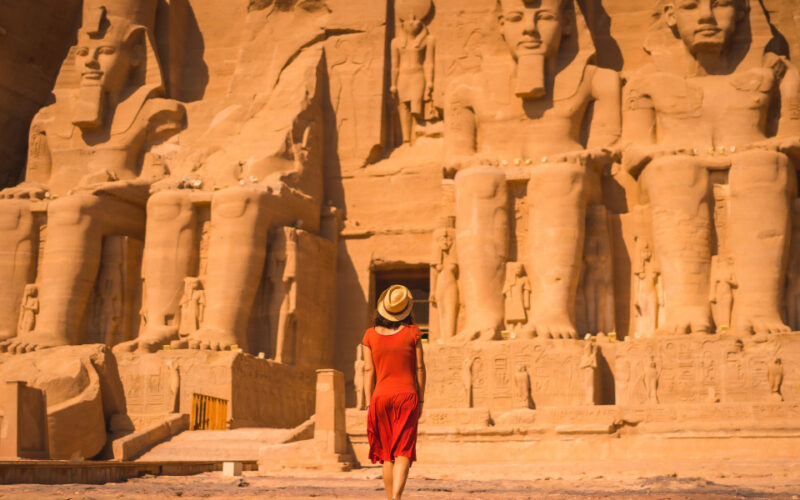Day 1- Cairo
Arrive at Cairo International Airport. You will then be transferred to the opulent Four Seasons Hotel Cairo at Nile Plaza or to the stunning Nile Ritz-Carlton (or similar).
Day 2- Cairo
The ancient quarter of Cairo is intense—the colors, the sounds, the density of people—and it’s likely been this way for thousands of years. Your local expert will show you a 12th-century citadel, the beautiful Alabaster Mosque and an unsurpassed collection of priceless artifacts, including mind-boggling treasures once buried with the boy king Tutankhamen.
Featured Excursion: Citadel of Salah al-Din, Alabaster Mosque and Egyptian Museum
Your tour of this historic city includes a visit to the Citadel of Salah al-Din, a massive compound containing mosques and museums and offering breathtaking views of Cairo. Founded in the seventh century by Arab conquerors, the Fatimid dynasty rulers made Cairo their capital and named it al-Qahira (“the Victorious”). The great sultan Salah al-Din built his citadel in the 12th century as a government center and bulwark against invading armies of Crusaders. Located high above the eastern end of Cairo on El-Moqattam Hill, the citadel was the home of Egypt’s rulers for more than 700 years and is one of the oldest attractions in the city.
After the Ottoman ruler Muhammad Ali seized power in the 1800s, he restored the walls of the citadel and built numerous palaces, schools and government buildings inside. His masterpiece was the great Alabaster Mosque, also known as the Mosque of Muhammad Ali, which you’ll have an opportunity to visit. Its two slender minarets were Muhammad Ali’s declaration of independence from Istanbul, as Ottoman law decreed that only a sultan could build a mosque with two minarets. The mosque’s expansive Turkish-style interior is lit by a beautiful array of lamps suspended from the intricately decorated ceiling.
You’ll also visit the Museum of Egyptian Antiquities, established in 1900 and by far the most impressive collection of Egyptian antiquities and pharaonic treasures in the world. Located in the heart of Cairo, the museum displays an astonishing number of objects. Ancient Egyptian history began with the founding of the Old Kingdom around 3100 BC and lasted 3,000 years, until Alexander the Great conquered the country in 332 BC and ended the rule of the pharaohs. The museum’s galleries are laid out in roughly chronological order as you move clockwise along the ground floor.
Day 3-Cairo/Fly to Luxor/Embark on Cruise
Prepare to be amazed at the legendary Temple of Karnak, a massive and absolutely astounding site, with gigantic columns, broad avenues lined with stone sphinxes and halls of truly epic proportions. This evening, you’ll revel in a Welcome Reception and Dinner onboard.
Featured Excursion: Temple of Khnum
The Late Roman Temple of Esna lies on the west bank of the Nile about 34 miles (55 kilometers) south of Luxor. Buried under debris for many centuries, the temple is just a short walk from the ship through the local market. It dates from the Ptolemaic and Roman period (180 BC to AD 251) and is one of the last Egyptian temples ever built.
Visitors can see two large inscriptions praising Khnum, the ram-headed god of creation, who fashioned mankind on a potter’s wheel from the clay mud of the Nile. There’s also a hypostyle hall with 24 pillars and a ceiling depicting Egyptian astronomical figures and Roman zodiac signs. On the temple’s western wall, look for images of Horus, the god of victory, and Khnum, dragging a net full of fish. At the foot of this façade are the last known hieroglyphic inscriptions ever recorded in Egypt.
Day 10- Luxor/Disembark/Fly to Cairo
Disembark in Luxor and transfer to the airport for your return flight to Cairo. Then, check in to your luxury hotel where you’ll have time to relax before dinner.
